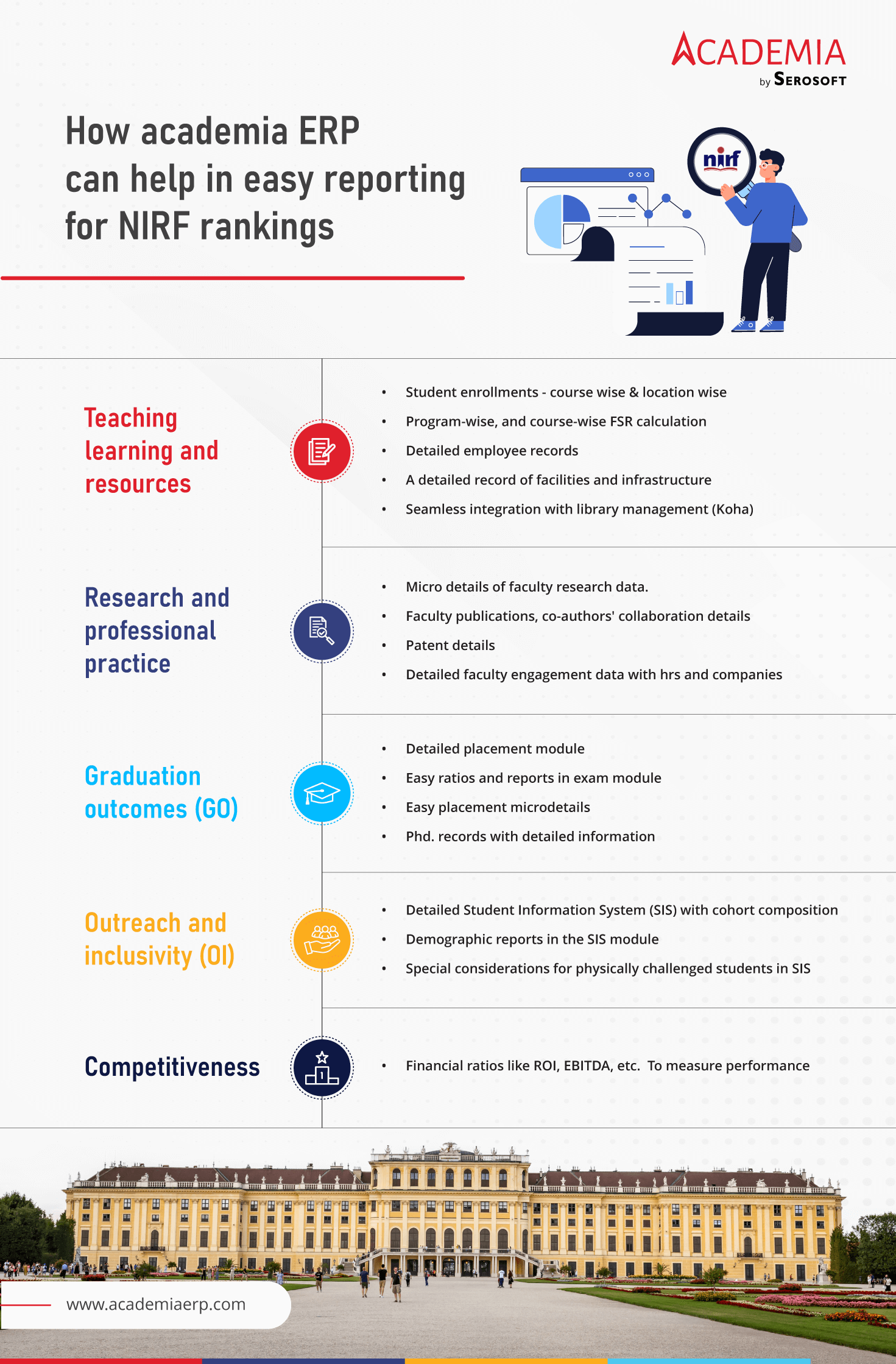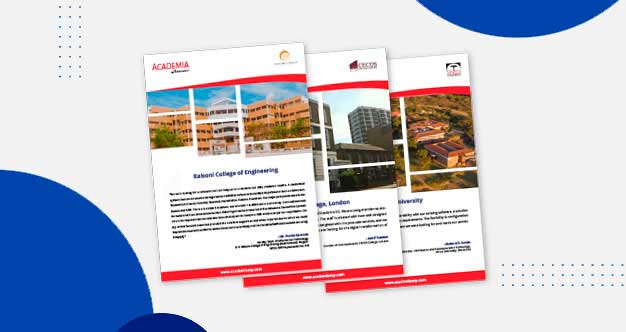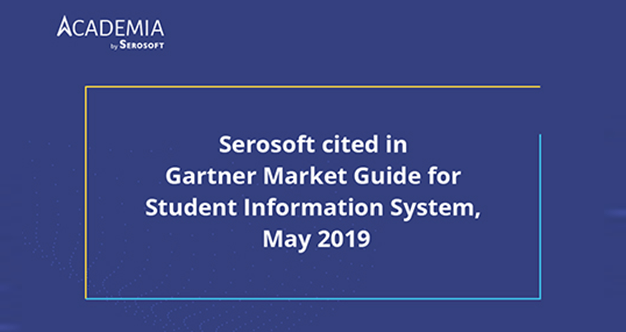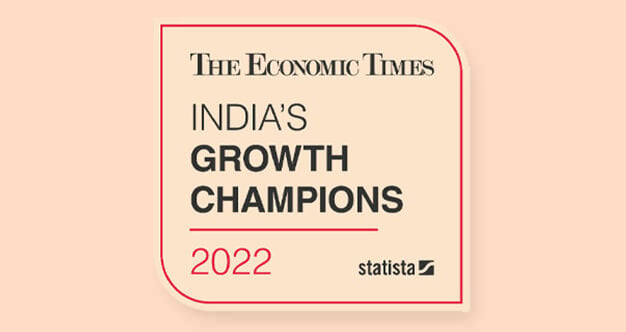Ultimate Guide to NIRF Rankings: Leveraging the Power of Academia ERP for Academic Excellence
Education Institutions in India strive to maintain their competitive edge and showcase their academic prowess. One significant measure of an institution’s performance and quality is the National Institutional Ranking Framework (NIRF) rankings. NIRF ranking provides a comprehensive evaluation of higher education institutions in India, encompassing various aspects such as teaching, learning resources, research, graduation outcomes, outreach, and inclusivity. In this blog post, we will explore everything one needs to know about NIRF rankings, like eligibility criteria, ranking parameters, and ways to excel them. We will also explore how Academia ERP can be your best companion in navigating the path to successful NIRF rankings and academic excellence.
Registration & Eligibility
The National Institutional Ranking Framework (NIRF) was approved by the Ministry of Human Resource Development (MHRD) and launched by the Honourable Minister of Human Resource Development on 29th September 2015. This framework outlines a methodology to rank institutions across India. The Institutes are ranked in two categories:
- Common overall rank and
- Discipline-specific rank like in the field of engineering, Management, etc.
To participate in the NIRF rankings, an institution must fulfill certain eligibility criteria and should first be registered. Registration is a pre-requisite for institutions desirous of getting themselves ranked on the parameters defined by NIRF. Only the following institutes can register for overall NIRF rankings:
- Institutions will be eligible for ranking consideration only if they have successfully graduated at least three cohorts of students in certain programs. If none of the programs an institution offers meet this requirement, the institution will not be permitted to register for ranking.
- Open Universities and Affiliating Universities, whether approved or funded by the State or Centre, are generally excluded from the ranking process. However, if these universities possess their own teaching or research campus, they are welcome to participate by providing data exclusively related to their physical campuses. Information regarding their role as open or affiliating universities cannot be included in the submitted data.
- To be eligible, institutions must either have a minimum total of 1000 enrolled students (based on approved intake) or be centrally funded institutions/universities of the Government of India with a highly focused institute that concentrates on a single discipline and has limited student intake.
- Lastly, the institution must offer both undergraduate (UG) and postgraduate (PG) courses.
Discipline-specific rankings are published solely for those fields in which a substantial number of institutions voluntarily participate in the ranking process. The selection of institutions for these rankings includes prominent establishments within the respective discipline, based on their satisfactory ranking scores. The ultimate determination of the rankings within a specific discipline is made by NIRF, which carefully evaluates the provided data. Once registered you have to perform on the following parameters to achieve good ranks in your respective category or overall whichever is suitable, let’s explore the same in detail.
Ranking Parameters:
Teaching, Learning & Resources (TLR)
The Teaching, Learning & Resources (TLR) component holds a significant 30% weightage in NIRF rankings. It comprises several sub-parameters, each carrying a specific weightage, and follows the following formulae for calculation:
- Student Strength including Doctoral Students (SS): This parameter evaluates the total number of students enrolled in the institution, including both undergraduate and postgraduate programs, NIRF also takes into account the presence of doctoral students, reflecting the institution’s focus on research and advanced studies. This is already an inbuilt report in Academia ERP reflecting the total number of student enrollments in different courses and academy locations.
- Faculty-Student Ratio with emphasis on permanent faculty (FSR): The FSR parameter measures the number of faculty members in proportion to the student population. Institutions with a higher number of permanent faculty members tend to score better in this category. AcademiaERP can calculate FSR program-wise, and course-wise and can easily assist in reporting on this parameter.
- The combined metric for Faculty with Ph.D. (or equivalent) and Experience (FQE): FQE considers the educational qualifications and experience of the faculty members. Institutions with highly qualified and experienced faculty are awarded higher scores. AcademiaERP effectively maintains the complete records including qualifications details of faculty members under the employee profile section and thus makes this segment reporting a cakewalk.
- Financial Resources and their Utilization (FRU): FRU evaluates the financial strength and efficient utilization of resources by the institution. It assesses factors such as infrastructure, library facilities, and investment in research and development. Academia provides a detailed record of facilities and infrastructure in terms of rooms, equipment, and also library management integration with KOHA.
Research and Professional Practice (RP)
The RP component focuses on the research output and professional practice of the institution, contributing to its overall ranking, it has a weightage of 30 percent in the NIRF rank calculation.
- The combined metric for Publications (PU): PU measures the number of research publications produced by faculty members. Institutions with a higher number of quality research papers are recognized for their contribution to knowledge dissemination. This data can be easily reported by Academia ERP via employee profile- research details, we manage the entire research info of each and every faculty member with micro details like the number of publications, references received, grants, start and end time, resources, making the reporting of this comprehensive parameter as easy as a few clicks.
- The combined metric for Quality of Publications (QP): While PU reflects the quantity, QP emphasizes the quality of research publications. Parameters such as citation impact and international collaborations play a vital role in determining the QP score. As mentioned that Academia ERP will have detailed faculty records in terms of research, we can easily report where the papers were published, who were the co-authors, and what was done in collaboration with which entities.
- IPR and Patents: Published and Granted (IPR): This parameter acknowledges the institution’s efforts in innovation and intellectual property rights. The number of patents filed, published, and granted are considered an indicator of the institution’s research capabilities. AcademiaERP could be the go-to solution for any requirement related to employees’ research details and we have special arrangements for recording Patents applied and granted too.
- The Footprint of Projects and Professional Practice (FPPP): FPPP evaluates the institution’s engagement in various projects and its involvement with industries and professional bodies. Collaborative projects and consultancy services contribute to a higher score in this category. AcademiaERP has inbuilt features that reflect the entire details of faculty’s engagements in terms of – Training, seminars, both corporate & industrial no. of hours taken or attended, etc. Hence reporting on this parameter could be very smooth for you.
Graduation Outcomes (GO)
The GO component gauges the employability and success of students after completing their education in the institution.This collective parameter has a weightage of 20 percent in the complete ranking process.
- The combined metric for Placement, Higher Studies, and Entrepreneurship (GPHE): GPHE evaluates the percentage of students who secure placements, pursue higher studies, or venture into entrepreneurship. Institutions with excellent graduate outcomes receive higher scores in this parameter. Academia ERP has an entire module that is dedicated to the placement, we have features reflecting all the details reflecting integrities of the placement scenario of the college.
- Metric for University Examinations (GUE): GUE considers the performance of students in university examinations. The pass percentage and average scores play a crucial role in determining the GUE score. Academia ERP offers a dedicated and comprehensive Examination module and this ratio can be easily evaluated and a report can be generated handy.
- Median Salary (GMS): GMS reflects the median salary earned by graduates from the institution. Higher salaries indicate the employability and value of the institution’s education. As mentioned earlier, the Placement module of Academia ERP can seamlessly produce this information as we maintain the record of all placement microdetails.
- Metric for Graduating Students Admitted into Top Universities (GTOP): GTOP recognizes the number of students admitted to top universities for further studies. Institutions with a significant number of students pursuing higher education in prestigious institutions receive higher scores. Academia ERP has an alumni record feature that can facilitate this requirement when needed.
- Metric for Number of Ph.D. Students Graduated (GPHD): GPHD measures the institution’s contribution to doctoral education. The number of Ph.D. students who successfully complete their programs indicates the institution’s research and academic capabilities. Academia ERP offers a Ph.D. section where the complete features exist related to thesis management, under the examination module. We can smoothly curate this data from the same.
Outreach and Inclusivity (OI)
The OI component evaluates the institution’s efforts in promoting diversity, inclusivity, and social responsibility. NIRF rankings give a 10 percent weightage to these parameters in the calculation of the ranks.
- Percentage of Students from Other States/Countries (Region Diversity RD): RD recognizes institutions that attract students from different states or countries, promoting cultural diversity and the exchange of ideas.
- We can see the composition of the cohort through Academia ERP’s world-class Student Information System – it has a section of the demographic report which readily reflects this report. As mentioned in the screenshot below.
- Percentage of Women (Women Diversity WD): WD acknowledges institutions that create an inclusive environment and provide equal opportunities for women in education. In Academia ERP’s Student Information system, the demographics reports can reflect this parameter in just one click.
- Economically and Socially Challenged Students (ESCS): ESCS considers the percentage of students from economically and socially disadvantaged backgrounds. Institutions that prioritize inclusivity and bridge educational gaps receive higher scores. Academia’s SIS- reports can give details about special-abled students and students coming from socially backward sections, and scholarship students to readily provide the data for this report.
- Facilities for Physically Challenged Students (PCS): PCS assesses the infrastructure and facilities provided by the institution to support physically challenged students. Institutions that ensure accessibility and inclusivity receive higher scores. Academia ERP provides special considerations for physically challenged students like allotting only ground floor rooms to them etc.

Peer Perception
The Peer Perception component captures the opinions and feedback from various stakeholders regarding the institution’s academic reputation.
- Peer Perception: Employers and Research Investors (PREMP): PREMP measures the perception of employers and research investors regarding the institution’s graduates and research capabilities. Positive feedback indicates the institution’s industry relevance and employability.
- Peer Perception: Academic Peers (PRACD): PRACD reflects the perception of academic peers regarding the institution’s academic and research standards. Esteemed opinions from fellow academicians enhance the institution’s reputation. Academia ERP provides seamless integration with lime service to share feedback forms from peers and hence this data could be very handy too with us.
Public Perception
The Public Perception component evaluates the institution’s image and visibility among the general public. This category of the parameter has 10% weightage.
- Public Perception (PRPUB) – PRPUB measures the general public’s perception of the institution, considering factors such as public awareness, reputation, and brand value. Positive perception contributes to a higher score in this category.
Competitiveness
The Competitiveness component compares an institution’s performance with other participating institutions in the NIRF rankings.
- Competitiveness (PRCMP): PRCMP evaluates an institution’s performance relative to other institutions. It considers the institution’s ranking position, improvement over time, and competition in the higher education landscape. Academia ERP can provide the details for the Financial year with ratios like ROI, EBITDA, etc to measure your performance contributing to easy reporting.
Integrating NIRF Parameters with Academia ERP
As institutions strive to enhance their NIRF rankings, they can leverage the capabilities of Academia ERP software to streamline and simplify the reporting process. Academia ERP offers comprehensive modules that cover various aspects of an institution’s functioning, including student information, faculty management, research publications, alumni data, and infrastructure management.
By integrating NIRF parameters within the ERP system, institutions can easily collect, collate, and analyze data required for reporting. The software can generate customized reports that align with the specific requirements of NIRF rankings, saving time and effort for institutions. Furthermore, Academia ERP enables institutions to track and monitor their performance in real-time, identify areas for improvement, and implement strategic measures to enhance their scores in different NIRF parameters.
Conclusion
NIRF rankings provide a holistic evaluation of higher education institutions, encompassing teaching, research, graduation outcomes, outreach, and perception. Institutions aspiring to improve their rankings can leverage the power of Academia ERP to streamline their data collection, reporting, and analysis processes. Academia not only offers all this but has the potential to offer much more as we customize at many levels as per the Institute’s requirements. By focusing on the different parameters and using technology to their advantage, institutions can unlock excellence, foster continuous improvement, and establish their position among the top-ranking institutions in India’s educational landscape.
Related posts :
 Higher Ed Plans
Higher Ed Plans K12 Plans
K12 Plans










